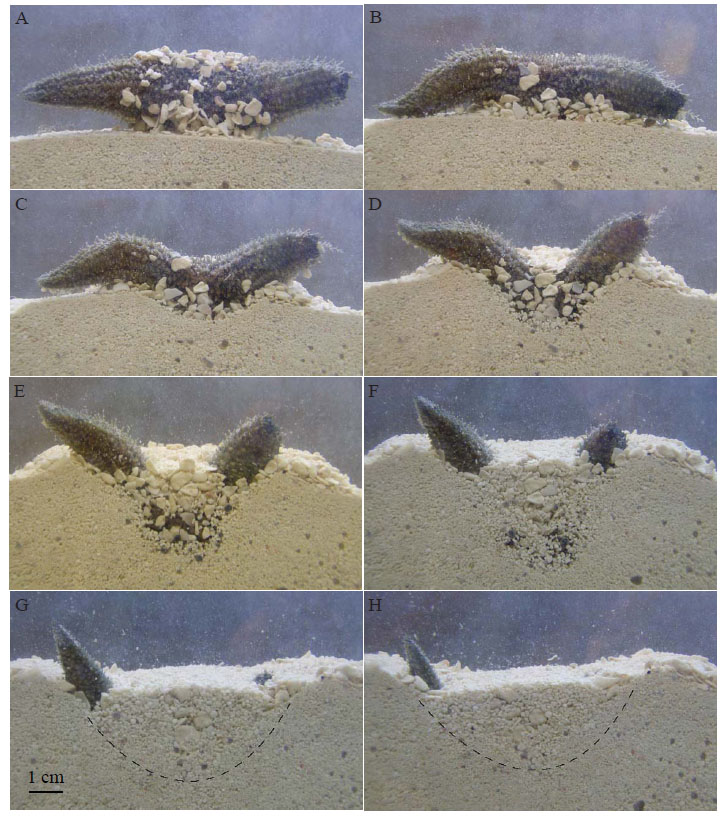Fig. (5) Complete burrowing sequence of T. gemmata in fine-grained carbonate sand. A) The specimen remains rigid when placed on the
sediment surface. B) Once relaxed, the specimen begins muscular contractions and starts to penetrate the sediment. C) Podia aid in
burrowing by carrying sand grains away from the growing depression beneath the center of the animal. D) The specimen continues to
contract its body into a U shape. E) Sand grains fill the depression forming above the center of the animal. F) Podia attach to grains of sand
and form a cover around the animals body. G) Once burrowing is complete, the anterior and posterior ends of the animal are left in contact
with the surface. The dashed line outlines the base of the U-shaped burrow. H) Over time the holothurians body may relax and form a
broader U shape.

